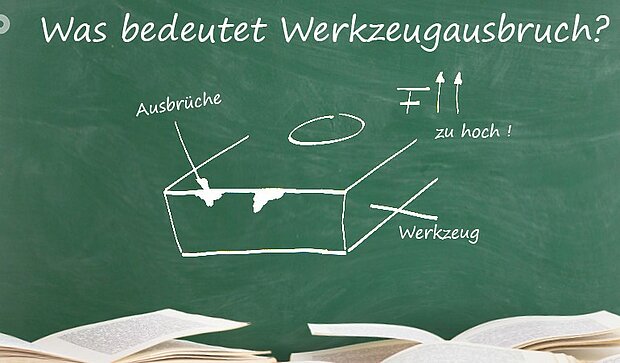The forces acting on the tool can lead to tool breakage or small chipping on the tool. This is because the forces on the tool are too great for the wedge or corner angles. The tool material is overloaded and fails. The result is that the tool can no longer fulfill its purpose. Cutting interruptions (grooving, milling...) can also cause chipping as a result of dynamic alternating stress. Furthermore, "non-metallic inclusions" from the workpiece material can cause small chipping on the tool. Non-metallic inclusions are mostly components of carbidic (carbon) or oxidic (oxygen) composition resulting from melting.


